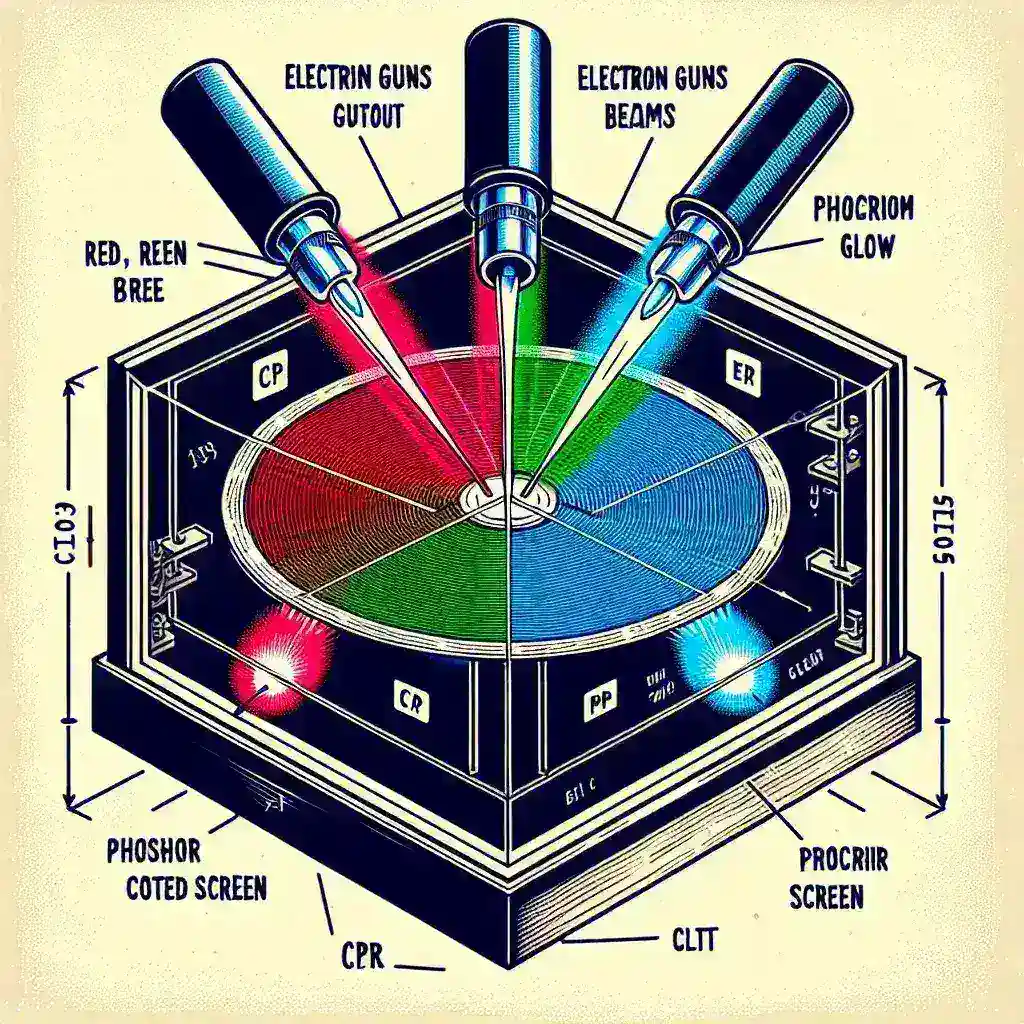Color CRT (Cathode Ray Tube) technology was the cornerstone of television and computer displays for many decades. Understanding how colors are produced in a color CRT can shed light on the fundamental principles of screen technology that shaped the digital world as we know it today.
To grasp how colors are generated, one must delve into three key components of a color CRT system: the electron guns, the shadow mask, and the phosphor-coated screen. Let’s break down each element and see how they contribute to color production.
Components of a Color CRT
| Component | Function |
|---|---|
| Electron Guns | Emit electron beams for red, green, and blue colors. |
| Shadow Mask | Ensures that each electron beam hits only its corresponding color phosphors. |
| Phosphor Screen | Contains red, green, and blue phosphors that light up when struck by electrons. |
Electron Guns
The electron guns in a color CRT are responsible for emitting beams of electrons. There are three electron guns, one for each primary color: red, green, and blue. These electron beams are precisely controlled and directed towards the screen using magnetic fields generated by deflection coils.
Shadow Mask
The shadow mask is a critical component that ensures the accuracy of color reproduction. It is a metal sheet with tiny holes or slots, placed just behind the phosphor screen. The purpose of the shadow mask is to allow only the correctly targeted electron beams to pass through, ensuring that each beam only strikes its corresponding red, green, or blue phosphor dots on the screen.
Phosphor Screen
The inside of the CRT screen is coated with phosphor material in a pattern of red, green, and blue dots or stripes. When the electron beams strike these phosphors, they emit light. By varying the intensity and combination of red, green, and blue lights, a wide range of colors can be produced.
How Colors are Mixed
Color mixing in a CRT follows the principles of additive color mixing. This process relies on combining different levels of red, green, and blue lights to produce a full spectrum of colors.
Additive Color Mixing
In the additive color mixing process, colors are produced by combining light emitted from the red, green, and blue phosphors. The intensity of each color can be adjusted by controlling the strength of the electron beams. For example, combining green and red light creates yellow, while mixing blue and red light creates magenta. The combination of all three primary colors at full intensity results in white light.
To illustrate additive color mixing:
- Red + Green = Yellow
- Green + Blue = Cyan
- Blue + Red = Magenta
- Red + Green + Blue = White
Steps in Color Production
Producing color in a CRT involves several synchronized steps. Below is a detailed breakdown:
Step 1: Electron Beam Generation
The electron guns generate beams, each representing one primary color: red, green, and blue. These beams are modulated in strength based on the input video signal.
Step 2: Beam Deflection
The electron beams are deflected by magnetic fields generated by the deflection coils, guiding them to the appropriate spots on the screen.
Step 3: Passing Through the Shadow Mask
The beams pass through the shadow mask, ensuring that each beam hits only the corresponding colored phosphor dots.
Step 4: Phosphor Excitation
When the electron beams strike the phosphor-coated screen, the phosphors emit light. The intensity and color of the emitted light depend on the energy and position of the electron beams.
Step 5: Color Mixing on Screen
On the screen, the continuously varying intensities of red, green, and blue phosphors mix to create the full spectrum of colors visible to the viewer.
Advantages and Disadvantages
While color CRTs were revolutionary, they come with their own set of advantages and disadvantages:
Advantages
- High Color Accuracy: CRTs offer excellent color reproduction.
- Wide Viewing Angles: Color CRTs have less color shift when viewed from different angles.
- Good Contrast Ratios: They deliver deep blacks and bright whites.
Disadvantages
- Bulkiness: CRTs are large and heavy, making them impractical for modern, space-saving designs.
- Energy Consumption: They consume more power compared to contemporary display technologies.
- Environmental Concerns: Disposal of CRTs is challenging due to hazardous materials like lead.
Future Perspectives
Although CRTs are largely obsolete today, replaced by more advanced technologies like LCD, LED, and OLED screens, the principles behind how colors are produced in CRTs laid the foundation for modern display technologies. Understanding these principles helps us appreciate the technological advancements we’ve made and the potential for future innovations.
In summary, a color CRT produces colors through a coordinated effort involving electron guns, a shadow mask, and a phosphor screen, facilitated by the principles of additive color mixing. While CRTs are no longer in widespread use, their influence on the development of display technology remains undeniable.

